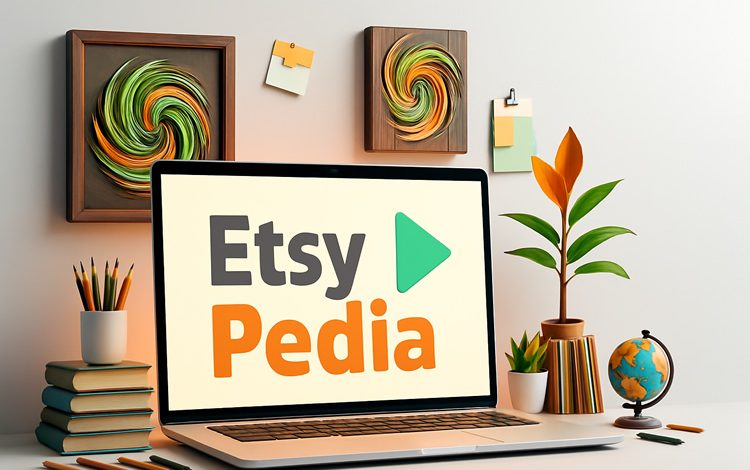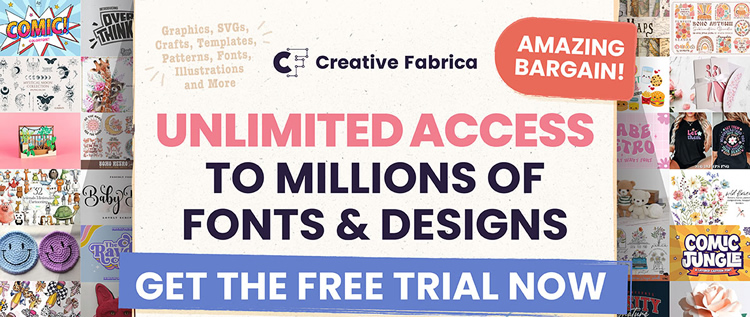How to sell art prints on Etsy?

Etsy Pedia: How to Sell Art Prints on Etsy?
Are you an artist dreaming of turning your creative passion into a profitable venture on Etsy? Perhaps you’ve already explored the world of selling original pieces but are looking for a scalable way to reach more art lovers. Selling art prints on Etsy is a fantastic opportunity to democratize your art, offer accessible price points, and build a consistent income stream. This guide will walk you through everything you need to know to successfully launch and grow your art print business on the platform.
Getting Started: The Foundation of Your Art Print Business
Before you even think about listing your first art print, setting up a solid foundation is crucial. This means understanding the basics of selling on Etsy and preparing your artwork for the digital marketplace.
Setting Up Your Etsy Shop
If you’re new to Etsy, the process is straightforward. You’ll need an account, a shop name, and some initial details about your business.
Step-by-Step Guide to Opening Your Etsy Shop:
-
- Sign Up for an Etsy Account with this link and get 40 listings for FREE: Go to Etsy.com and click “Sign in” or “Register.”
-
- Open Your Shop: Once logged in, click “Sell on Etsy” or navigate to your account settings and find the option to open a shop.
-
- Choose Your Shop Preferences: Select your shop language, country, and currency.
-
- Name Your Shop: This is a critical branding decision. Make it memorable, relevant to your art, and ideally, available across social media platforms.
-
- Set Up Billing: You’ll need to provide payment information for Etsy fees and set up how you’ll receive payments from sales.
-
- Create Your First Listing: Even if it’s a placeholder, you’ll need to create at least one listing to fully open your shop. This is where you’ll start uploading your art.
Why This Matters: A well-named and properly set-up shop builds initial trust with potential customers. It’s your digital storefront, and first impressions count.
Pro Tip: Consider exploring Etsy shop templates to give your shop a professional and cohesive look right from the start. Check out the amazing options available here: Etsy Listings templates.
Understanding Your Art and Target Audience
What kind of art do you create? Who are you creating it for? Identifying your niche and understanding your ideal customer will guide every decision, from the type of prints you offer to how you market them.
-
- Niche Identification: Are you selling abstract paintings, whimsical illustrations, landscape photography, or minimalist line art?
-
- Target Audience: Who is most likely to buy your art? Consider their age, interests, income level, and decorating style.
Key Takeaways: Know your art and know your audience. This is the bedrock of a successful art print business.
Crafting Irresistible Art Prints: Quality Matters
The quality of your art prints directly impacts customer satisfaction and your shop’s reputation. Offering high-quality prints ensures that your digital art translates beautifully into a tangible product.
Print Types and Paper Choices
The printing process is paramount. You have a few options, each with its pros and cons:
-
- Giclée Prints: These are high-quality inkjet prints using archival inks and papers, known for their longevity and vibrant colors. This is often considered the gold standard for fine art prints.
-
- Standard Prints: More budget-friendly, these can be produced using various methods but may not offer the same archival quality or color accuracy as giclée.
Paper Considerations:
-
- Archival Matte Paper: A popular choice for its smooth surface and excellent color reproduction.
-
- Fine Art Paper (Cotton Rag): Offers a luxurious feel, often with a slight texture, and excellent longevity.
-
- Lustre or Semi-Gloss Paper: Provides a subtle sheen, enhancing colors and contrast.
Pro Tip: Investing in high-quality printing services is non-negotiable for serious art print sellers. If you’re unsure about the technicalities, resources like our Canva course for Etsy sellers can help you prepare your digital files perfectly for print.
Print-on-Demand (POD) vs. In-House Printing
You have two primary fulfillment models:
-
- Print-on-Demand (POD): You partner with a POD service. When a customer orders, the service prints, packs, and ships the print directly to them. This eliminates the need for inventory and upfront costs.
-
- In-House Printing: You manage the printing, packaging, and shipping yourself. This offers more control over quality but requires more time, space, and investment.
Why This Matters: POD services like Printful or Printify can be incredibly beneficial for new sellers or those with limited resources. They allow you to focus on creating art while minimizing operational overhead. Many sellers find success using these methods. Learn more about this model in our POD on Etsy category.
Preparing Your Digital Files
High-resolution files are crucial for crisp, clear prints.
-
- Resolution: Aim for at least 300 DPI (dots per inch) at the intended print size.
-
- Color Mode: Use RGB for digital files, but ensure your printer works with CMYK if that’s their preference, or convert your files carefully.
-
- File Format: JPEG or TIFF are standard, while PNG is good for images with transparent backgrounds.
Key Takeaways: Quality prints start with quality digital files and a thoughtful choice of printing materials and methods.
Mastering Etsy Listings: From Photos to Keywords
Your Etsy listings are your virtual salespeople. They need to be attractive, informative, and optimized for search.
Captivating Product Photography
Since customers can’t touch your art online, your photos are everything.
-
- High-Quality Images: Use good lighting (natural light is often best), a clean background, and ensure your artwork is in focus.
-
- Multiple Angles: Show close-ups of texture, the full piece, and mockups of the print in a styled room setting.
-
- Lifestyle Shots: These help customers visualize the art in their own homes.
-
- Video: Consider adding a short video showcasing the artwork or the print quality.
Pro Tip: Stunning visuals are key to attracting buyers. Learn how to elevate your product imagery with our guide on Photography – Video and Images. You can also create eye-catching visuals with aesthetic faceless video reels to promote your products. Explore them here: aesthetic faceless video reels.
Writing Compelling Descriptions
Your descriptions should be informative, persuasive, and searchable.
-
- Hook the Reader: Start with what makes your art unique.
-
- Details, Details: Include the medium, size options, paper type, printing method, and whether it comes framed or unframed.
-
- Storytelling: Share the inspiration behind the piece.
-
- Keywords: Naturally weave in relevant keywords that customers might use to find your art.
Etsy SEO: Getting Found
Search Engine Optimization (SEO) on Etsy is about making your listings visible to potential buyers.
Key SEO Elements for Art Prints:
-
- Titles: Be descriptive and keyword-rich. Think about what someone would type into the Etsy search bar.
-
- Example: “Abstract Landscape Art Print, Moody Coastal Wall Art, Nautical Decor, Unframed or Framed Giclée Print”
-
- Titles: Be descriptive and keyword-rich. Think about what someone would type into the Etsy search bar.
-
- Tags: Use all 13 tags available. Mix broad terms with more specific long-tail keywords.
-
- Examples: “abstract art,” “landscape print,” “coastal decor,” “ocean wall art,” “minimalist art,” “nautical gift,” “giclee print,” “home decor art,” “bedroom wall art,” “living room art,” “blue green art,” “large wall art,” “fine art print.”
-
- Tags: Use all 13 tags available. Mix broad terms with more specific long-tail keywords.
-
- Attributes: Fill out all relevant attributes like color, style, subject, and occasion.
-
- Materials: Specify the materials used for printing and framing if applicable.
Why This Matters: Effective SEO on Etsy is like having a salesperson working for you 24/7. If your listings are optimized, they’re more likely to appear at the top of search results. To truly master this, consider investing in a comprehensive premium SEO guide: SEO Guide.
Step-by-Step Listing Creation on Etsy:
- Log in to your Etsy account.
- Click “Shop Manager” in the top right corner.
- Navigate to “Listings” on the left-hand menu.
- Click “Add a listing.”
- Upload Photos/Videos: Add your best product images and a video if you have one.
- Fill in the Title: Use your researched keywords.
- Choose the Category: Select the most accurate category for your art print.
- Add Attributes: Complete all relevant details.
- Write a Detailed Description: Include all essential information and storytelling.
- Use Production Partners: If you’re using a POD service, select them here.
- Set Inventory and Pricing: Enter the quantity you have available (or set to 1 for POD) and your price.
- Add Variations: If you offer different sizes, colors, or framing options, set these up.
- Fill in Shipping Details: Specify processing time, shipping costs, and where you ship to.
- Add Tags: Utilize all 13 tag slots.
- Preview and Publish: Review your listing before making it live.
- Key Takeaways: Great photos, keyword-rich descriptions, and smart SEO will make your art prints visible and appealing to buyers.
Pricing Your Art Prints for Profit and Popularity
Pricing can be tricky, but it’s essential for profitability and customer perception.
Calculating Your Costs
Before setting a price, understand all your expenses:
-
- Art Creation Costs: Materials for your original art, your time.
-
- Printing Costs: Cost per print from your chosen printer or POD service.
-
- Etsy Fees: Listing fees, transaction fees, payment processing fees.
-
- Packaging Materials: Tubes, mailers, tissue paper, tape.
-
- Shipping Costs: Postage, insurance.
-
- Marketing Costs: Any advertising or promotional expenses.
-
- Your Time: Don’t forget to value your labor in creating, listing, and packing.
Pricing Strategies
-
- Cost-Plus Pricing: Calculate your total costs and add a profit margin.
-
- Value-Based Pricing: Consider what the market is willing to pay for art of your style and quality.
-
- Tiered Pricing: Offer different price points for various sizes or print types.
Pro Tip: Don’t underprice your work! It devalues your art and can lead to burnout. Explore 1000 easy digital products ideas if you’re looking to diversify your income streams, which can complement your art print sales: 1000 easy digital products ideas.
Competitive Analysis
Look at what similar artists are charging for comparable prints on Etsy. This isn’t about copying, but understanding the market.
Key Takeaways: Price your art prints to cover costs, reward your time, and align with market value.
Shipping & Fulfillment: Delivering Joy to Your Customers
How you get your art from your hands to your customer’s door significantly impacts their experience.
Packaging for Protection
Art prints are delicate. Proper packaging is non-negotiable to prevent damage during transit.
-
- Roll Prints: Use acid-free tissue paper to protect the print surface before rolling.
-
- Sturdy Mailers: Cardboard tubes are ideal for rolled prints. Use sturdy mailers or boxes for flat prints.
-
- Water Protection: Place prints in a clear cello bag or protective sleeve.
-
- Reinforce: Add cardboard inserts for extra protection if mailing flat.
Pro Tip: If you’re using a POD service, they handle this for you. However, if you’re shipping yourself, investing in quality packaging supplies will save you heartbreak and money on replacements. Explore Etsy shop templates for mockups that can showcase your packaging: etsy listings images templates.
Shipping Costs and Options
-
- Calculate Accurately: Use Etsy’s shipping calculators or weigh your packaged items to determine costs.
-
- Offer Options: Consider offering expedited shipping.
-
- International Shipping: Decide if you want to ship globally and research international postage rates and customs.
Processing Times
Be realistic about how long it takes you to prepare and ship an order.
-
- Set Clear Times: Clearly state your processing time in your listings and shop policies.
-
- POD vs. In-House: POD services will have their own processing times, which you need to factor into your customer-facing estimates.
Why This Matters: A smooth shipping and fulfillment process leads to happy customers and positive reviews, which are vital for Etsy success. For a deeper dive into optimizing your shop’s operations, consider an Etsy Shop Audit Service.
Key Takeaways: Protect your art during shipping, be transparent about costs and times, and ensure a positive unboxing experience.
Marketing Your Art Prints: Reaching Your Audience
Creating beautiful art prints is only half the battle; getting them seen is the other.
Leveraging Etsy’s Built-in Tools
-
- Etsy Ads: Consider using Etsy Ads to increase visibility within the platform.
-
- Sales and Promotions: Run occasional sales or offer discounts to attract buyers. You can find great ideas in our Holidays and Promotions category.
Marketing Outside Etsy
Don’t rely solely on Etsy’s search.
-
- Social Media: Instagram and Pinterest are visual platforms perfect for showcasing art. Use high-quality images and relevant hashtags. Consider our 2 Month Organic Pinterest Promotion or 3 Month Organic Pinterest Promotion services to boost your reach. Our Pinterest Guide is also an invaluable resource.
-
- Blogging: Share your creative process, inspiration, and artwork on a personal blog.
-
- Email List: Encourage customers to sign up for your newsletter for updates and exclusive offers.
-
- Collaborations: Partner with other artists or influencers.
Pro Tip: Building an audience outside Etsy can drive consistent, high-quality traffic to your shop. Explore our Marketing Outside Etsy section for more strategies.
Building Customer Loyalty
-
- Excellent Customer Service: Respond promptly to inquiries and resolve issues efficiently.
-
- Thank You Notes: Include a personal thank you note with each order.
-
- Encourage Reviews: Positive reviews build trust and improve your Etsy ranking.
Why This Matters: A robust marketing strategy ensures a steady flow of customers to your shop, making your art print business sustainable and scalable. For a comprehensive approach to organic traffic, check out our Promotion Services.
Key Takeaways: Combine Etsy’s internal tools with external marketing efforts and focus on building relationships with your customers.
FAQ: Your Burning Questions Answered
How do I determine the best print sizes to offer?
Start with standard frame sizes like 8×10 inches, 11×14 inches, and 16×20 inches, as these are readily available and popular. You can also offer smaller sizes like 5×7 or larger statement pieces based on your artwork and target audience. Consider offering your art as digital downloads too for ultimate customer flexibility, with guides on Digital products ideas to sell on Etsy to help you get started.
What is the difference between giclée and other art prints?
Giclée (pronounced “zhee-clay”) refers to a specific high-quality printing process using archival, pigment-based inks on fine art paper. This results in superior color accuracy, detail, and longevity compared to more common commercial printing methods.
How can I make my art prints stand out from competitors on Etsy?
Focus on unique artwork, exceptional print quality, compelling storytelling in your descriptions, high-quality lifestyle photos, and outstanding customer service. Consider offering unique framing options or bundle deals.
Should I offer framed prints or just unframed?
This depends on your target audience and operational capacity. Offering both can cater to a wider range of customers and budgets. If you’re using print-on-demand, check which services offer framing as an option. If you’re handling fulfillment yourself, offering unframed prints first can simplify your process.
What are common mistakes new art print sellers make on Etsy?
Common mistakes include poor photography, insufficient SEO, underpricing their work, inadequate packaging, and not understanding their target audience. Learning from experienced sellers is key. You can learn a lot from comprehensive resources like our How to sell on Etsy full guide.
Selling art prints on Etsy is a rewarding journey that combines your artistic talent with smart business practices. By focusing on quality, optimizing your listings, pricing strategically, and marketing effectively, you can build a thriving online art business. Remember to always strive for excellent customer service, and your passion for art will shine through!
Ready to take your Etsy shop to the next level? Explore our wide range of resources to help you succeed. From mastering SEO to creating stunning visuals, we’ve got you covered.
-
- For expert guidance on optimizing your listings, check out the Etsy Listing Audit service.
-
- Want to boost your shop’s visibility and conversions? Consider our How to Boost Etsy Conversions promotion service.
-
- To create eye-catching visuals that stop the scroll, explore our Etsy Listings Video Templates.
-
- If you’re looking for a shortcut to fantastic digital product ideas, grab the 1000 Easy Digital Products Ideas bundle.
-
- For a foundational understanding of how to sell on Etsy, dive into the How to Sell on Etsy Full Guide.
Don’t forget to check out our general Etsy resources at onlinesellershub.com/categories.
What are your biggest challenges when selling art prints on Etsy? Share your thoughts and questions in the comments below!




